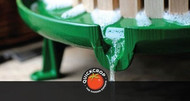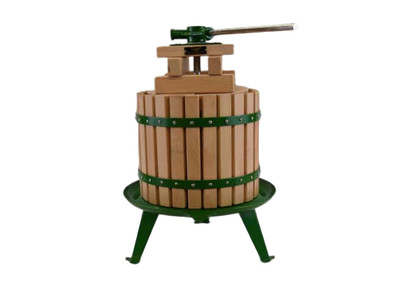How to Make Cider from Your Apple Harvest

Previously on the blog we've talked about the Vigo Fruit Press, and how you can make your own scrumptious, nutritious homemade juice from your fruit harvests. However, in the case of large apple harvests, there may be a limit to the amount of homemade apple juice or apple crumble that the average person has the appetite for. In which case, why not enter the brave new world of cider-making.
This is the next logical step on from extracting your own homemade apple juice, and it can be a real incentive for social gatherings with friends or neighbours.
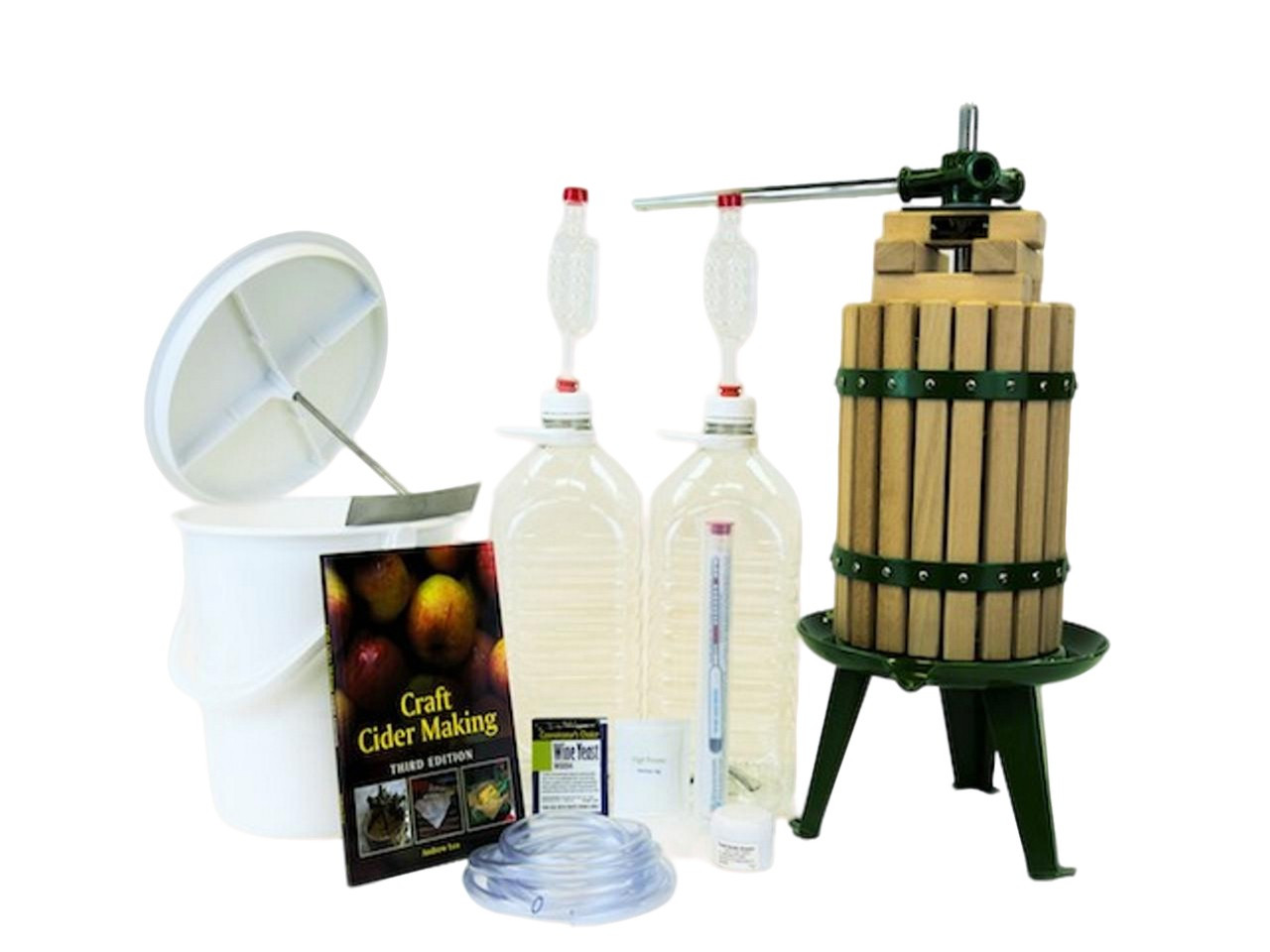
6Ltr Cider Making Kit inc. Fruit Press
View ProductCider is basically fermented pure apple juice, and while that may sound simple enough it can be a bit of a delicate art. It's not quite as beginner-friendly as producing homemade juice, but the challenge can very much be worth your time. Once you get really good at it, homemade cider is often more satisfying and distinctive than most of the commercial kinds.
What are the Best Apple Varieties For Making Cider?
'Cider apples' might seem like the logical answer here, but the best cider is often made from a mix of apple varieties. Generally, you want a combination of sweet, tart and acidic apples to create a good balance that will be reflected in the end product.

Some popular choices include:
Sweet Apples: Katy, Elstar, Golden Delicious
Acidic or 'Tart' Apples: Bramley, Granny Smith, Foxwhelp, Crab Apples
Bittersweet Apples: Yarlington Mill, Kingston Black
Something to keep in mind here is that there is no set-in-stone recommendation for what specific ingredients you should use when making cider. Firstly, taste (in both senses of the word) can be very subjective. Secondly, the kind of apples you use, how ripe they are, the balance between 'sweet' apples and 'acidic' apples: all of these factors can subtly change the taste profile of your homemade cider.
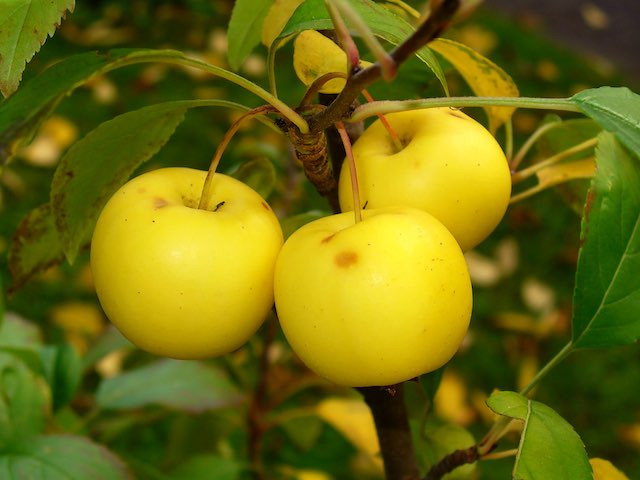
Crab Apple Tree
View ProductJust make sure that you take some notes as you go, because when you hit upon that 'alchemy' that results in your perfect brew you will want to use similar ingredients again. Think of it like a fun experiment.
What Equipment Do I Need to Make Cider?
You can make cider from store-bought juice, but when pressing juice from homegrown apples you will need a fruit press and some method of crushing your apples before adding them to the press. For cider making you will also need some extra equipment.
A Fruit Crusher, Apple Mill or Grinder (or a Timber Plank and Bucket!): You will want to mash your apples into a consistent pulp or 'pomace', which can then be added to the fruit press. This can be done 'manual labour' style (hence the bucket), but it'll be a lot easier if you have a Fruit Crusher or - even easier again - an electrically operated Apple Mill.
Fruit Press: Extracts juice from crushed apples.
Fermentation Vessel: A food-grade plastic or glass container is used for fermentation. It's advisable to have more than one container: this will allow you to siphon off cider from the sediment left behind during the fermenting process.
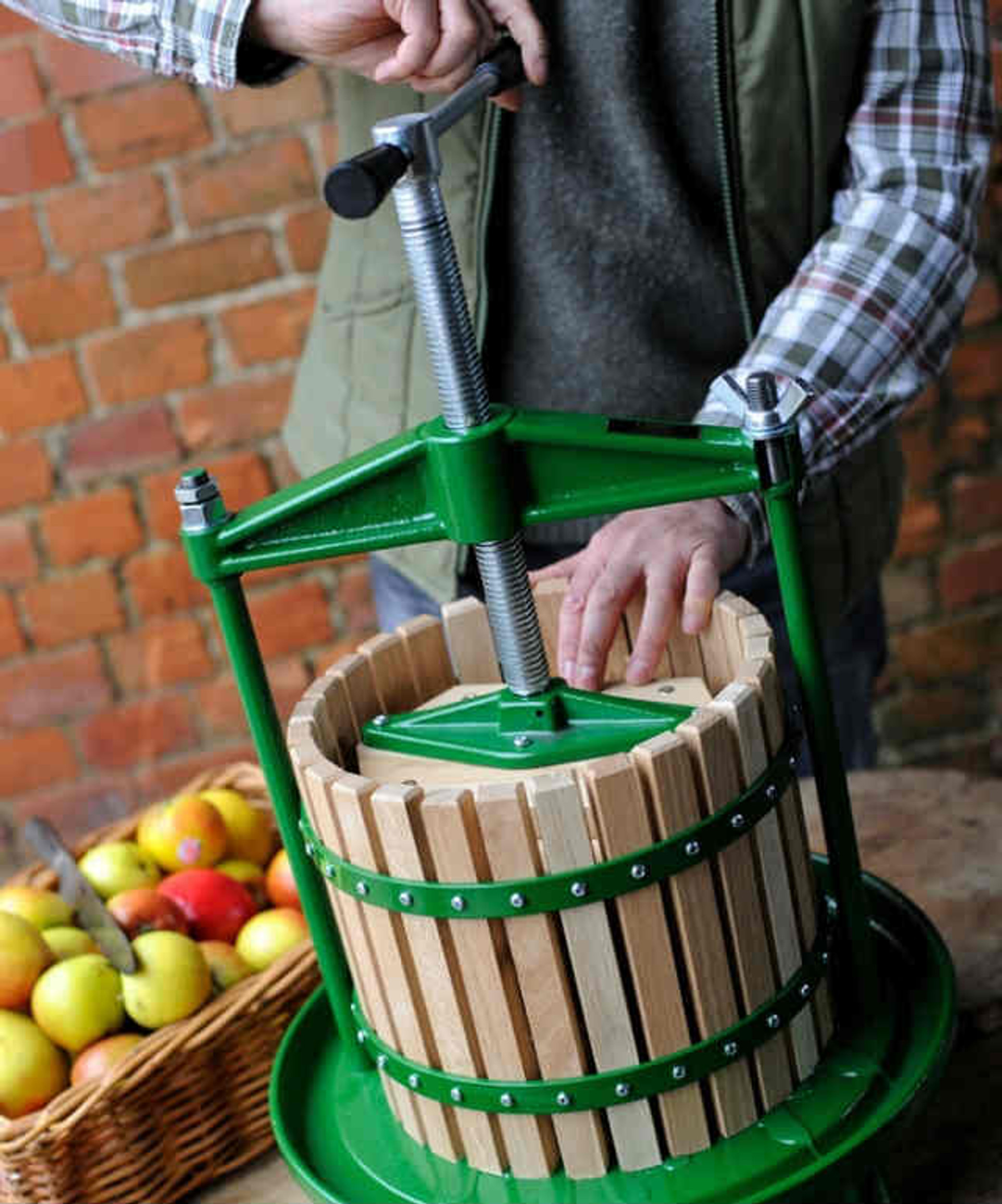
Vigo Cross Beam Fruit Press
View ProductYeast: Apple skin actually contains natural yeast, so if you leave them for long enough in airless conditions they will ferment by themselves. Cultured yeast however is commonly used for cider making; this can be obtained in sachets.
Storage Containers: A simple glass bottle with a cork can be used to store your homemade cider, or you can go for a bag in a box.
Hydrometer: A hydrometer measures the specific gravity or density of a liquid. With apple juice they give a good indication of the sugar content, which in turn should indicate the level of alcohol.

Airlock: As fermentation takes place, carbon dioxide is created as a byproduct. An airlock allows the gases to escape while also preventing outside air or insects from entering, which can spoil the mix. An airlock is not completely necessary for fermentation but will increase your chances of a good ferment.
Funnel and Tubing: For decanting, adding juice to containers etc.
Sterilisation Tablets: When making cider as a hobby it is also very important to keep your equipment clean, so that no undesirable bacteria is introduced during fermentation.
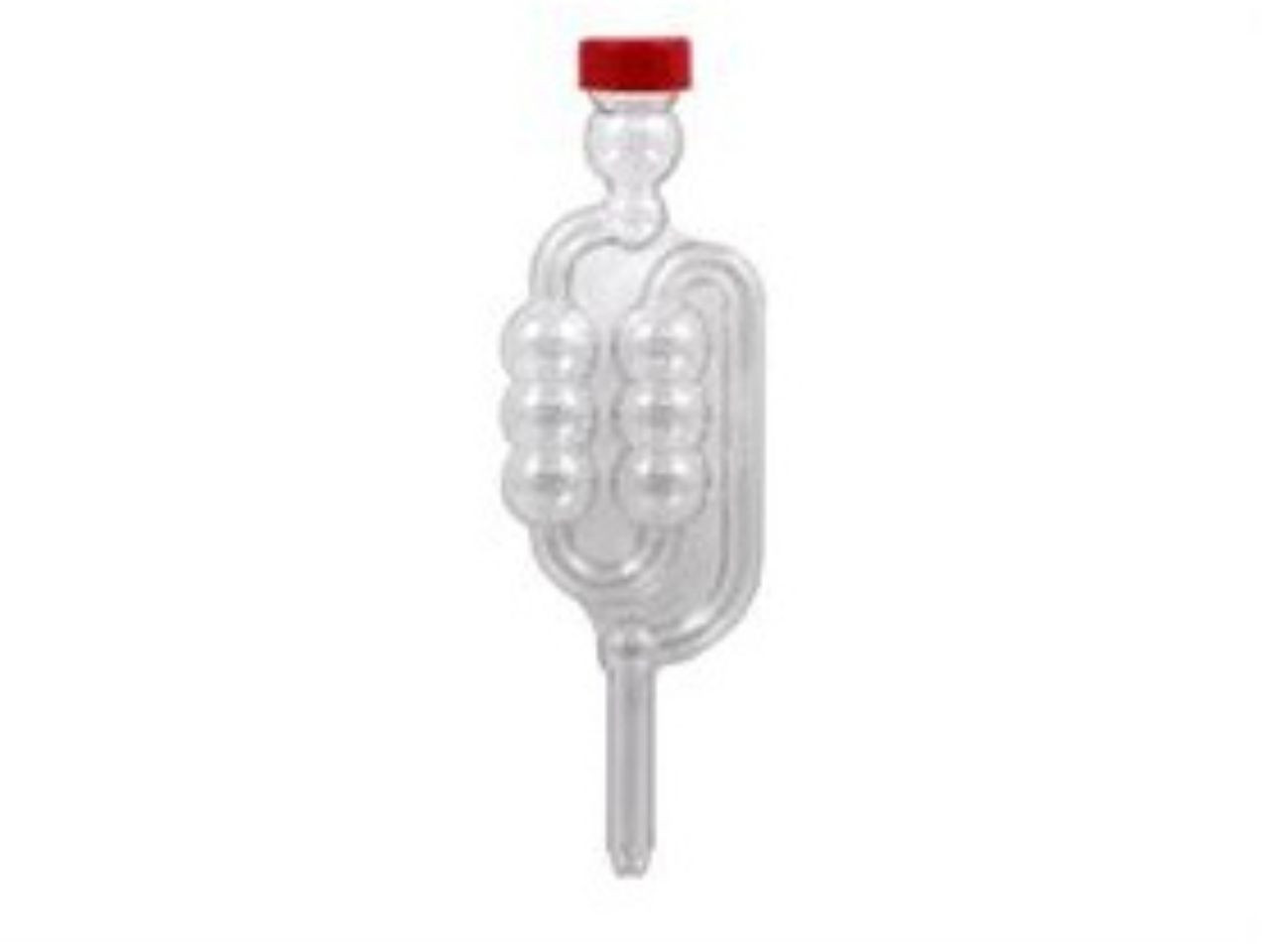
Airlock Plastic 6 Chamber
View ProductHow do I Prepare Apples for Cider Making?
It's important to ensure that apples are free of any mud before adding them to your crusher. Rinsing them with a hose or in a bucket should be enough to wash any mud or potential bird poo off the outer skin.
As for the apples themselves, when making cider (as opposed to fresh juice) you don't need to worry so much about blemishes or whether they are overripe. You can cut away dark spots as you're quartering or chopping up the fruit. Just avoid using mouldy or rotten apples and you should be good to go.

Core the apples and cut them into quarters. Peeling is not necessary. A fruit crusher or apple mill will grind the apple fragments up into a 'pomace' which can then be added to your fruit press.
With a fruit press you have a choice between the 'spindle' design or a 'cross beam' design, but both are more or less equally effective ways of extracting as much juice as possible from the mixture. See the video below where Andrew demonstrates how the Vigo presses work.
How do I Ferment Apple Juice?
When a food or liquid is broken down by microorganisms or a yeast in controlled conditions, we end up with something desirable such as bread, yoghurt or an alcoholic beverage.
When it comes to making cider, apple juice is added to a suitable container (such as a demijohn) with a lid, before adding yeast. The yeast consumes the natural sugars and converts them into carbon dioxide and alcohol (commercial or cultured yeast leads to a more reliable and efficient fermentation than wild yeast).
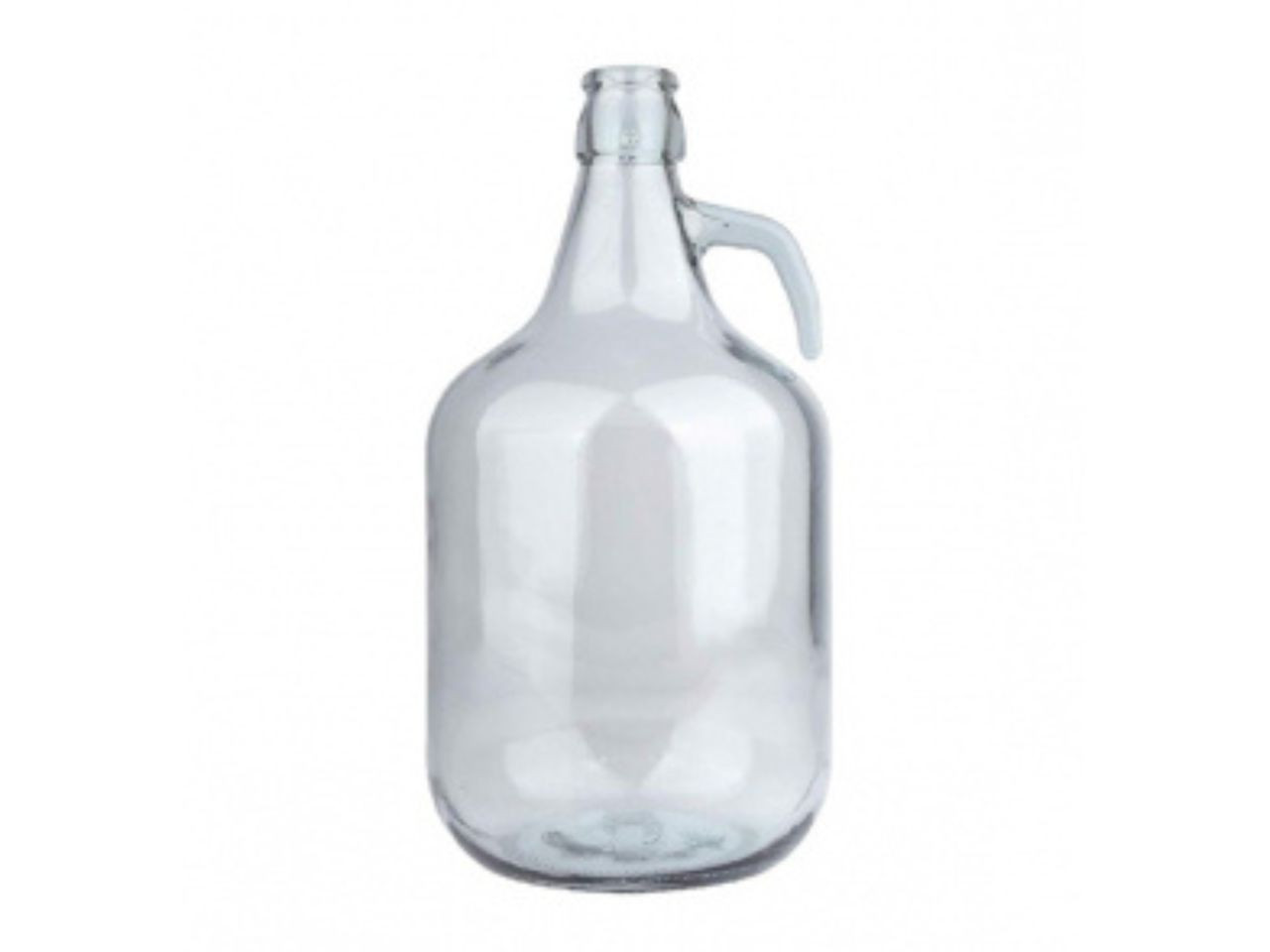
1 Gallon Glass Clear Demijohn (4.54 Litres)
View ProductThe vessel can also be fitted with an airlock. This allows the gases produced to escape and keeps contaminants out.
Andrew Lea (author of Craft Cider Making) explains that a cool fermentation (15°C or even below) is preferred in order to retain the fruity flavours developed by the yeast. However you shouldn't let the temperature drop below 10°C, as cultured yeasts can struggle to ferment below this temperature.
You should also check the info on your yeast sachet to see if there is any temperature recommendations, as this can differ depending on the type of yeast.

How Long Does Fermentation Take?
This can vary; often 1-2 weeks is enough time for an effective ferment, but it can take up to 6 weeks depending on factors like temperature and whether or not you are adding a yeast to speed things along.
How Can I Tell When Fermentation Is Complete?
Fermentation is complete when bubbling in the airlock slows or stops and the specific gravity (if using a hydrometer) stabilizes. The cider should taste less sweet and more alcoholic.
If you're using a hydrometer to track fermentation, take a reading at the very start of the process. The device will give you a gravity reading as well as a reading on the 'potential alcohol' scale. At the end of the fermentation process, the specific gravity should be somewhere between 1040 and 1065. The larger the difference between the first and final reading, the higher the alcohol content. If you want to raise the gravity reading you can add sugar: 10g of sugar per litre of juice should see an increase of 5° or 1%.

Bottling Your Cider
As mentioned above, you should have an additional container to hand so that you can separate your cider from the deposits created by fermentation (this material is referred to as 'lees'). This step may need to be repeated again after a few weeks if some more sediment forms.
You can use a funnel to decant the liquid between containers. Seal your bottles with caps or corks, and store in a cool, dark place. Your homemade cider can be drank straight away after fermentation has completed, but it's advisable to let it 'mellow' for a few weeks. Allowing the bottles to age for at least a couple of weeks will improve the flavour.
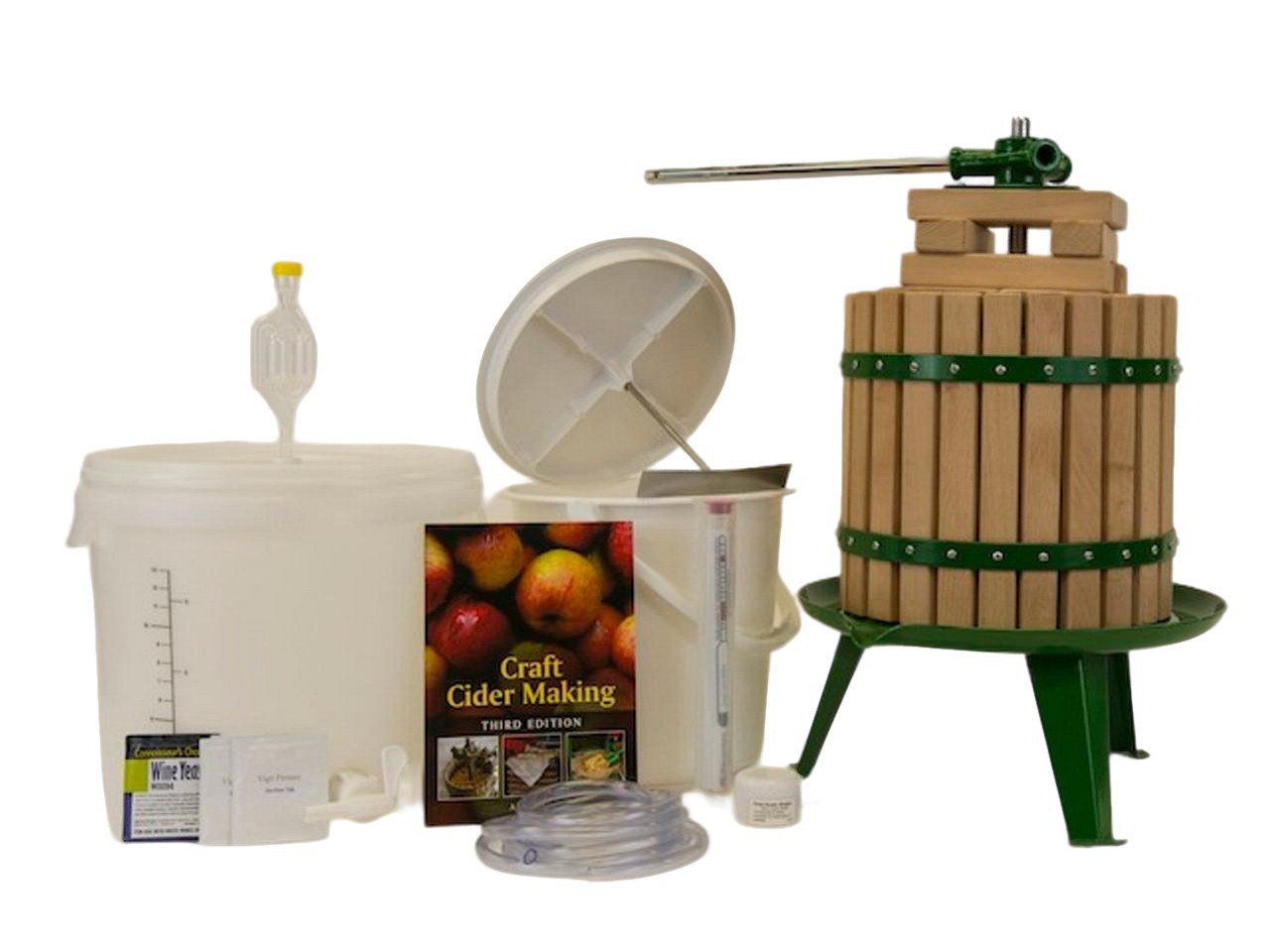
12Ltr Cider Making Kit inc. Fruit Press
View ProductIf you want sparkling cider, you can add some priming sugar before bottling, which will create carbonation.
Dry cider can be bottled without pasteurisation. However, if your cider contains residual or added sugar it will need to be pasteurised; this is to prevent further fermentation.

Vigo 27 Litre Pasteuriser
View ProductHow Long Can I Store Cider For?
Cider can be stored for several months to a year or more. Properly bottled and sealed (in clean bottles), it will continue to develop flavour over time. Keep it in a cool and dark place to maintain quality.
Vigo supply purpose built 'Bag in Boxes' which form a vacuum seal that protects the contents from outside air or organisms; it also has an easy pour tap. We sell the compact 5 litre version (in a pack of 5) but there are also 10 and 25 litre versions.

What Should I Do If My Cider Tastes 'Off'?
Unpleasant odours or flavours can indicate contamination or improper fermentation. It’s essential to ensure all equipment is sanitized and that you’re using clean, high-quality ingredients. If the cider tastes off, it might be best to discard it and try again.
Can I Add Flavours or Spices To My Cider?
You can add spices like cinnamon, cloves, ginger, or even fruits such as berries to your cider either during fermentation or after. Just be mindful of how these additions can alter the fermentation process.
Note: Recent additions to our Vigo range include the aforementioned Storage Bag In Box, a 15 litre Fermentation Bucket and a Funnel with Strainer. We also stock a full Cider Making Kit as well as a range of Presses, Crushers, Mills...just about anything you need to either get started or to upgrade to the next level.
